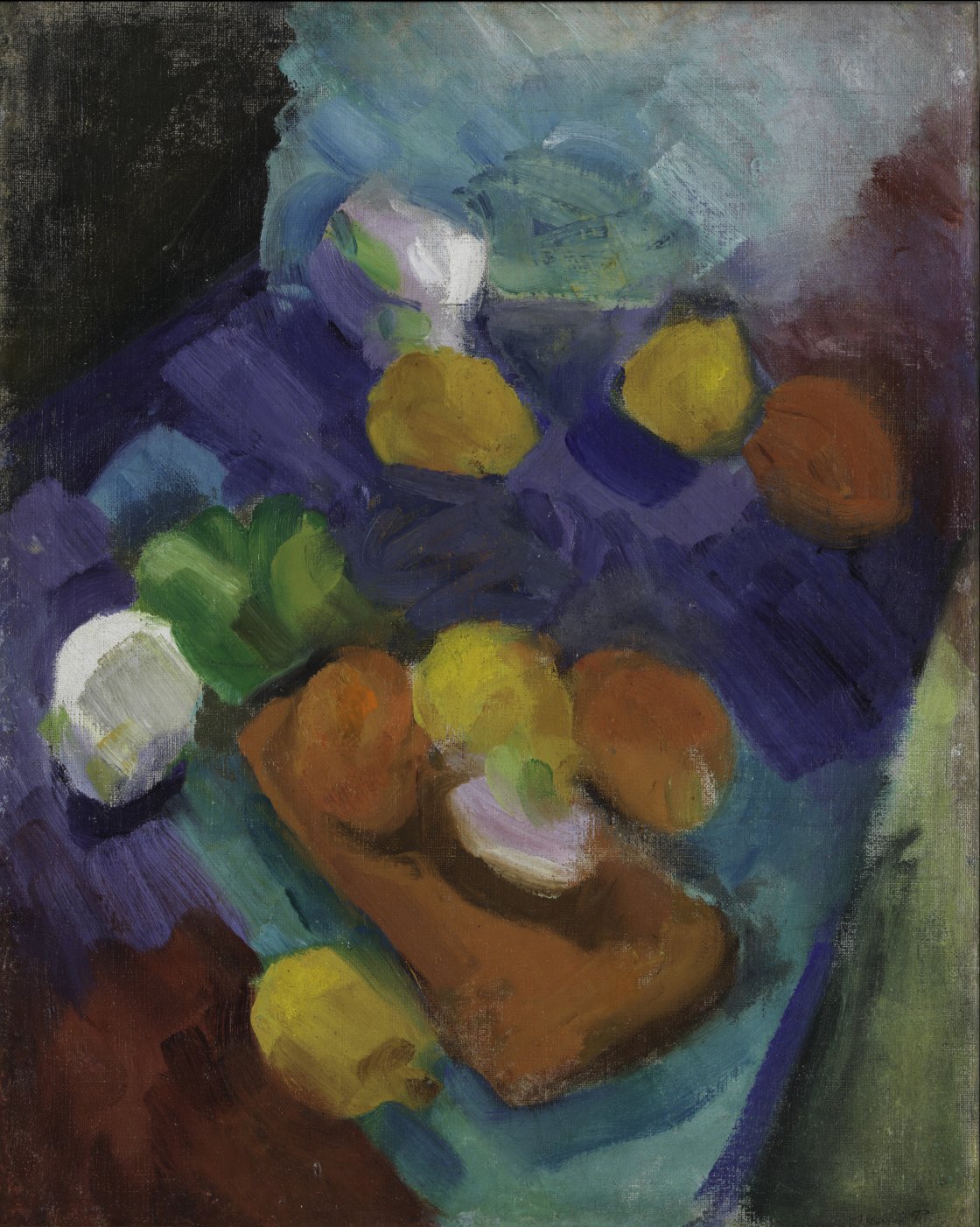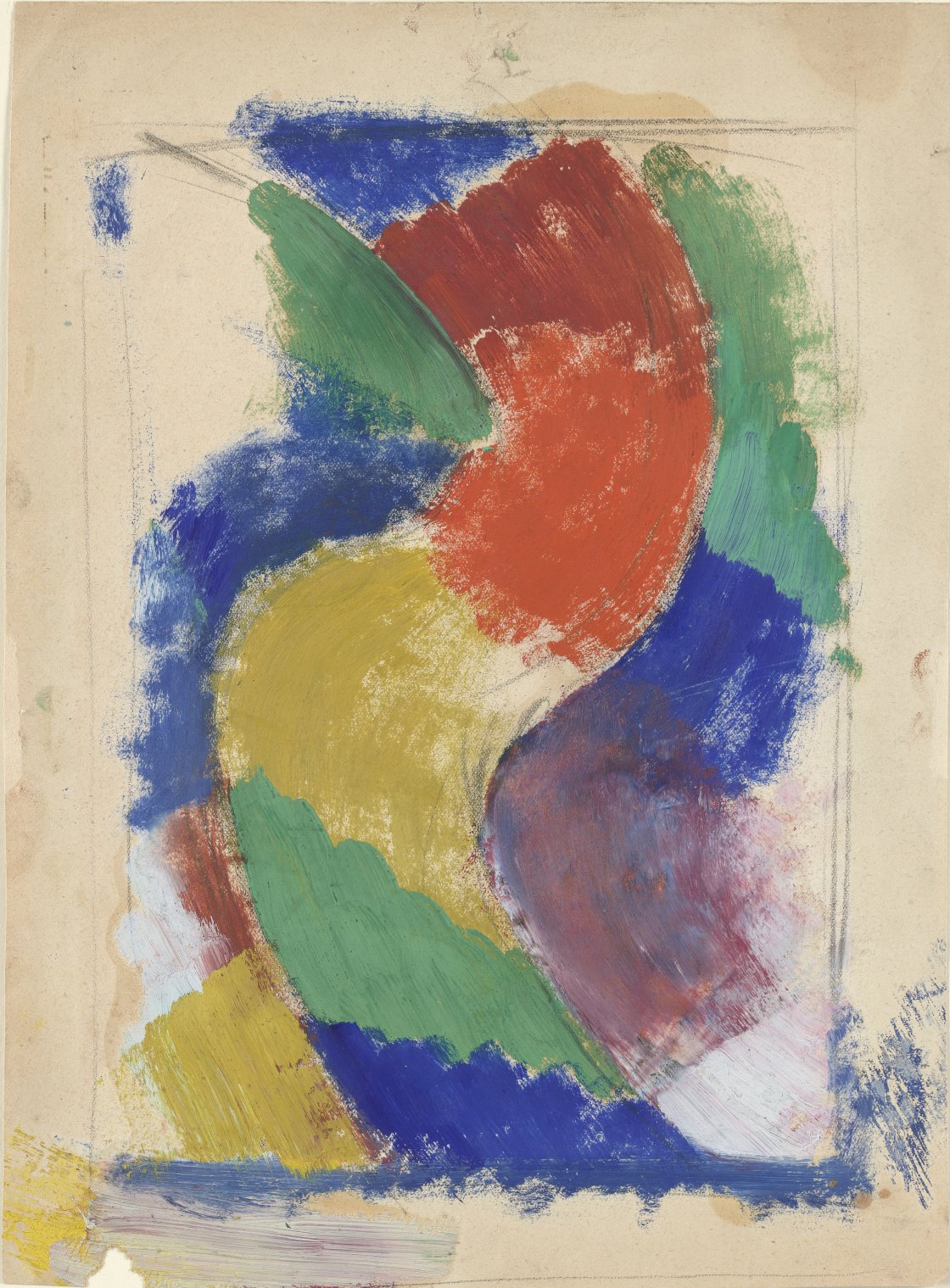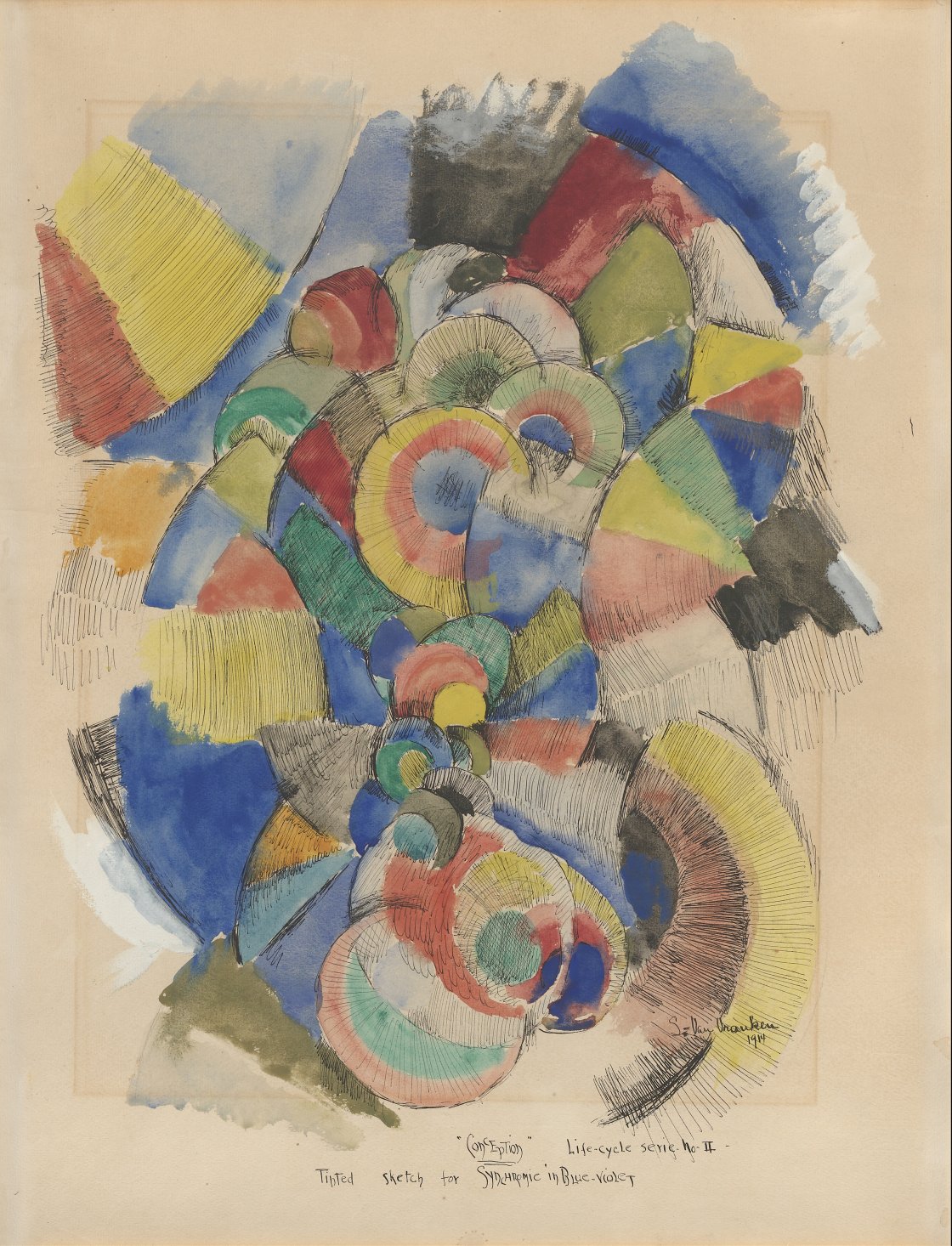The Museo Nacional Thyssen-Bornemisza is presenting a small-format exhibition devoted to the first American abstract art movement, Synchromism, which means “with colour” as symphony means “with sound”. The movement was founded by the American artists Morgan Russell (1886-1953) and Stanton Macdonald-Wright (1890-1973) who were living in Paris when they presented their work to the public under this name. At the height of Futurism, Cubism and Simultaneism, Russell and Macdonald-Wright focused on the use of colour to evoke form and space, transforming it into an independent expressive and formal element.
The exhibition presents eight works loaned by the Vilcek Foundation in New York. These studies on paper, oils on canvas and hand-painted posters allow for an appreciation of the emergence and evolution of this artistic experiment, which was most significantly active in the period from 1912 to 1916, an era that saw an increasing quest for synaesthesia in painting. They are accompanied by a selection of paintings from the permanent collection in order to fully present the European context in which this movement emerged.
Russell and Macdonald-Wright met in Paris in 1911 where their earliest artistic investigations were inspired by Fauvist colour and Cubist structure. In addition to Michel Eugène Chevreul and Hermann von Helmholtz’s colour theories, they soon introduced the complex notions formulated by Percyval Tudor-Hart, who proposed a scale of geometrical progression that modified luminosity and created correspondences with musical tones. Russell and Macdonald-Wright devised a simplified system which allowed them to create colour scales and harmonies in the manner of musical chords, ranging from yellow to violet and from light to dark.
In 1913 they exhibited together for the first time in two European cities: Munich (1 to 30 June) and Paris (27 October to 8 November). In the catalogues of the two exhibitions the artists explained that their aim was not to create a school but to avoid having incorrect labels applied to them, such as Cubist, Futurist or Orphist.
In these manifestos Russell and Macdonald-Wright stated their aim to be the investigation of relationships between colour, form and space and their organic rhythm, density, transparency and luminosity with the aim of transmitting a musical sensation through their works.
The posters advertising the exhibition, painted by the artists themselves, combined printed typography with drawings and gouaches. They soon disappeared from the walls and kiosks on which they were displayed, taken home by passers-by. Only three have survived, of which the two in the collection of the Vilcek Foundation are included in this exhibition.
In March 1914 the two artists exhibited in New York while in 1916 they showed their work alongside that of other artists at the Forum Exhibition of Modern American Painters. Russell and Macdonald-Wright returned to figurative painting in the 1920s but occasionally revisited their earlier artistic investigations.
Stanton Macdonald-WrightConception. Life-Cycle Series No.II: Tinted Sketch for Synchromy in Blue-Violet, 1914Watercolor, pen and carbon black ink on paper. 58,4 x 44,8 cm. The Vilcek Foundation Collection. © Courtesy of The Estate of Jean Macdonald‐Wright
Title: The Synchromists
Organiser: Museo Nacional Thyssen-Bornemisza.
Venues and dates: Madrid, Museo Nacional Thyssen-Bornemisza, 27 June to 1 November 2022.
Curator: Emily Schuchardt Navratil, curator at the Vilcek Foundation.
Technical curator: Clara Marcellán, curator of Modern Painting at the Museo Nacional Thyssen-Bornemisza.
Number of works: 8 from Vilcek Foundation collection and 9 from Thyssen-Bornemisza collection.
Publications:Please don’t say Synchromism …, by Clara Marcellán, in Ventanas, online periodical regarding research of the Works of the Collection.



.jpg)
.jpg)